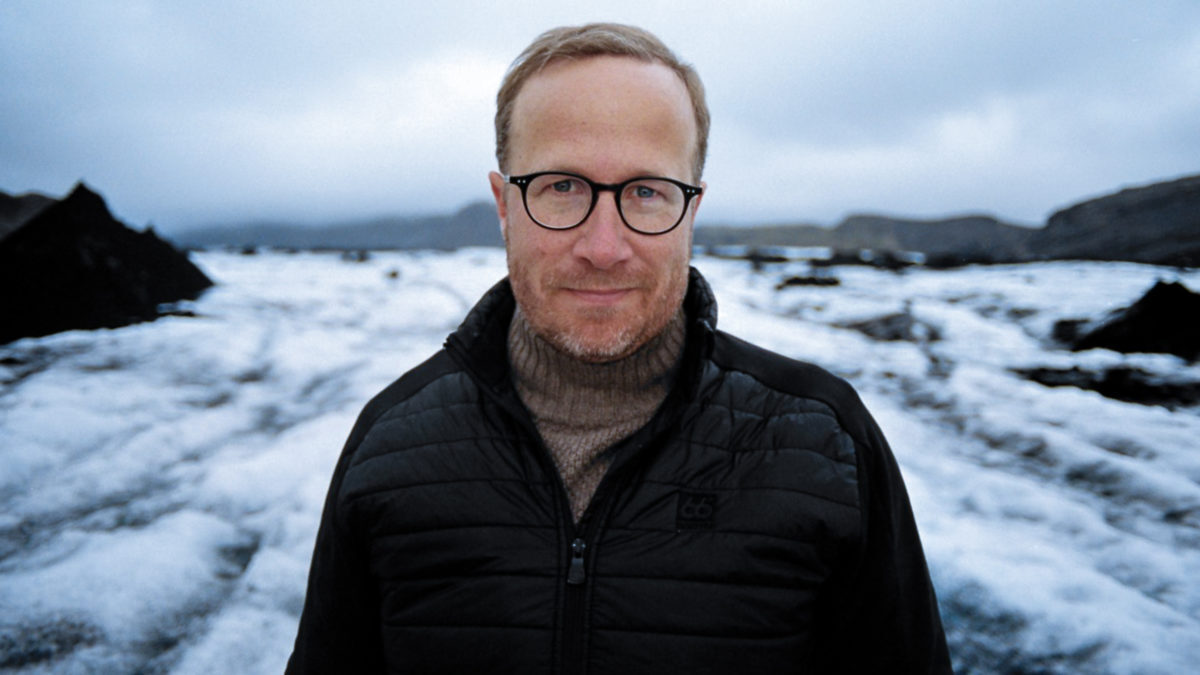Icelandic author Andri Snær Magnason is the most influential Icelandic literary figure since the Nobel prize winner Halldór Laxnes was in his heyday. I first heard of Andri Snær Magnason when my wife brought home his poetry book, Bónusljóð (Bónus Poetry). I found the poetry to be tragicomic work of genius. This was back in the last century, in 1997, believe it or not!
Subscribe to my newsletter for exclusive discount codes that will give you savings on 150 Iceland tours and travel services.
Subscribe to the Stuck in Iceland newsletterReceive exclusive promo codes for tours, car rental, camper van rental, and outdoor clothing rental. Get occasional updates about new content. I will never give your data to a third party without consent.
Thank you
Jon Heidar, Editor of Stuck in Iceland Travel Magazine

Predicting moguls and influencers
His sci-fi novel, Lovestar, was such an incredibly timely novel when it came out in 2002. It predicted social media influencers and the mega-rich entrepreneurs like Elon Musk, Steve Jobs, or Jeff Bezos who affect the whole world to pursue their ambitions.
Embarrassing the Icelandic establishment
Andri Snær Magnason jolted Iceland when he published his book Dreamland: A Self-Help Manual for a Frightened Nation in 2006. He shattered the long-standing political orthodoxy of sacrificing large parts of the unique wilderness of the Icelandic highlands to create hydroelectric power stations to power aluminium smelters. It is a tour de force of a book, and the accompanying documentary is a shocking indictment of Icelandic politicians giving away Icelandic resources to polluting multinational companies for limited gain. The political establishment reeled from the body blow. In one instance, the local branch of the ruling Independence Party in the town of Akureyri bought the screening of the documentary in the town’s cinema. One of its leaders had a running commentary on the film. I remember chuckling at this poor attempt of explaining away the exposé.
Grappling with our biggest challenge
In his latest book, On Time, and Water which came out in 2019, Andri Snær Magnasson grapples with humanity’s biggest challenge, climate change. He does what few have attempted before; he puts the incredible scale and speed of climate change into a context that people might understand. I work with international banks to empower their customers by showing the carbon emissions data from their consumption. As a rule, I recommend that my customers read On Time and Water to grasp the issues facing those who want to make information about climate change and emissions available to people. After all, we cannot touch greenhouse gases. We have a hard time grasping that we have entered the Anthropocene with the entire planet and its biosphere being changed and degraded rapidly by human activity.
Andri Snær Magnason receives the Tiziano Terzani International Literary Prize for On Time and Water
Andri Snær Magnason was recently awarded the Tiziano Terzani International Literary Prize for On Time and Water. His theatre collaboration with Högni Egilsson of Gus-Gus and Hjaltalín fame made the tragedy of climate change really come to life.
Other noteworthy works by Andri Snær Magnason
Andri Snær Magnason also wrote the children adventure The Blue Planet, and the children’s/young adult’s book Casket of time. He recently directed a documentary on mental health with Anní Ólafsdóttir called The Hero’s Journey to the Third pole (see trailer). In his new film Apausalypse, Andri Snær Magnason and Anni Ólafsdóttir go around Iceland and interview artists and philosophers to look for the higher meaning of the great pause caused by the Covid 19 pandemic.
What inspired you to grapple with such a huge topic as climate change?
I am not sure if I use the word climate change very much in the book. I found out that people seem to be bored when you read that word and they think they understand the issue. So I say that my book is about “time and water”, how all elements of water on our planet are shifting during this century. It came through various directions. I met a climate scientist, Wolfgang Lucht in a panel discussion in Germany. He asked me why I didn’t write about climate change. I said that I was not a scientist, so I did not feel like I had the authority to write about the issue. But he said that people don’t respond to data, they respond to stories.
Interviewing the Dalai Lama
I had been collecting stories of my grandparents, they were glacier explorers in Iceland in the 1950s, founding partners of the Icelandic glacier research society. Then I was offered the opportunity to interview the Dalai Lama, and the discussion was very much about glaciers, the consequence of the melting of the Himalayan glaciers. And so the story started evolving, science, mythology, thoughts about mythology and time, what is sacred vs. rational, and how we are faced now with such a large issue that in a way it is larger than language, our words can not really grasp what is happening.

You demonstrated how the Earth had entered the Anthropocene by writing a eulogy for now-vanished Icelandic glacier Ok and a message to the future that the current generation is fully aware of the effects of climate change. Are you hopeful that we will learn the lesson in time, and take the required actions?
By writing about the issues I hope to contribute to the understanding before it is too late, or at least take part in the movement, moving the world in the correct direction. Sometimes I am afraid that we can’t understand predictions, only consequences. Instead of understanding the problems and taking action, we can’t react until the problems have reached us – but then it might be too late to take action. That is like not understanding the concept of an avalanche until the accumulated snow has fallen towards you.
What is the highest impact action we can take as individuals to help the environment?
By choosing governments that work on legislation and enable us to live in sustainable infrastructure. We need efforts that are on scale with the moon landing, Marshall Plan, war effort, Corona Operation Lightspeed, we need carbon taxes and transparency as consumers to understand our real footprint and how to reach zero. A lot of people want to live sustainably but are often locked inside systems that are unsustainable. We can eat less meat, waste less food,, use things better, and transform all energy systems. This is a huge task, and some of the biggest things, not in the hands of individuals or individual nations.
My magazine encourages traveling, an activity that has a high carbon footprint. What are your views on traveling?
That is a dilemma that is difficult for us in Iceland, as we have few alternatives from using airplanes. A dilemma for myself as I need to travel a lot due to my work as my book is coming out in 30 languages. I think travelling in itself is a noble thing when done in the right way. Mass tourism can of course be a menace to fragile places, and selfie tourism can also be very superficial. To be curious about seeing the world, meeting people, exchanging ideas, learning about others is something we have always wanted.

Cruise to Iceland on an airship for slower and deeper traveling
I think traveling might have made the world more peaceful, as it promotes understanding, trade, and friendship. Travelling is about 3% of global emissions and we need to start changing our travel habits, use more electric ground transport and maybe we need to reinvent the airship again (not kidding) The Zeppelin came to Iceland in 1931 – it must be possible to make something as cool before 2030. That was before GPS, ultralight materials, and the drone. And probably it can float today with hydrogen without exploding. It would be cool to float to Europe in 10 hours, in a comfortable blimp with a cabin, looking at the waves below. Maybe we will have to travel more slowly, maybe stay longer, learn the language, stay for months rather than weekends. Slower, deeper might be the future of traveling.
What Icelandic artists would you recommend?
We have lots. Visual artists Ólafur Elíasson, Ragnar Kjartansson and Anna Rún Tryggvadóttir. Writers like Thora Hjörleifsdóttir, Kristín Ómarsdóttir, Sjón, Fríða Ísberg, and Jón Kalman. Film makers like Benedikt Erlingsson. In music I think Monsters and men are coming with new things soon, check out the music of Högni Egilsson.
What advice would you give to those who are visiting Iceland for the first time?
Well, travel slowly, try not to drive more than 100km in a day, rent an electric car. Stay for long, two to three weeks or longer, stay long enough to read a few books. Learn some of the language. Go to Bíó Paradís and see a film. Chew your food well, and go for long walks, and long swims and go to restaurants for good fish.




